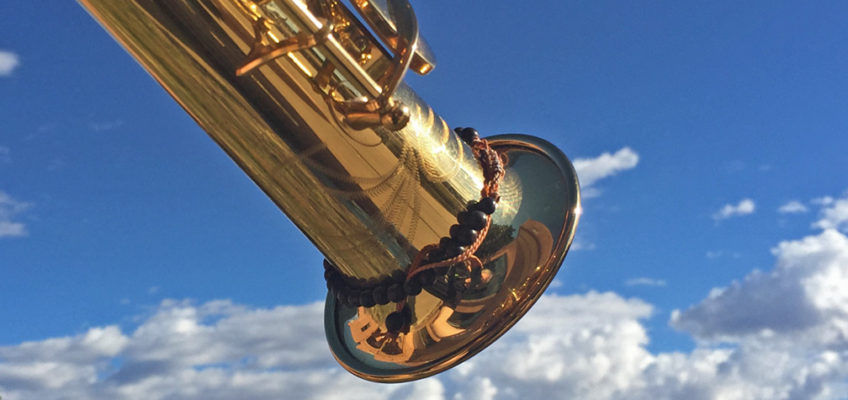Having put in many hours, I’ve gotten better at playing soprano sax in tune, but pitch is still an issue. Here’s what I’ve learned from other players and my own experience:
- There are certain notes on even the best instruments that are always going to be challenging
- Most players, myself included, have a normal tendency to play sharp in the higher octaves, especially early on
- Listening (paying attention) to any accompaniment and being conscious of its pitch helps
- Practicing long tones with a tuner and some accompaniment helps
And, something that I’m not too happy about – I personally have a natural tendency to want to play (or sing) high notes sharp. So to my ear, a sharp high note sounds more in tune than one that is spot on. That means that left to my own devices, without trying to adjust, I’ll play (or sing) sharp in the upper register, typically above a middle G. So I’ve had to work on learning what “in tune” really sounds like, and adjust my playing for that. That’s not easy, and I’m not even sure it’s entirely possible to correct, especially when improvising.
But, I’m working on it, and here’s the practice routine I’ve settled on for now:
My Practice Routine On Soprano Sax
When I begin my practice session, I warm up on long tones. First I set up a tuner on my iPhone, and on my computer put on the iReal track of Cantaloupe Island, set to a medium tempo. This tune is just three chords: Gm7, Eb#11, Em7, and it works well for this purpose because it stays on each chord for 4-8 measures. Am I playing my soprano sax in tune? I can try to match the pitch of the chords in the tune, and use the tuner to check my work.
I start out with a low Bb, and play long tones – a full, deep breath for each note – and gradually work my way up the horn, playing notes in the chords. As I’m warming up, I’m moving up the horn, but usually just one note per breath. I’ll be working with the tuner in two ways:
- I’ll play a long note with the tune without looking at the tuner, and then look back at the tuner to check my accuracy. I’ll also go back and forth between triad notes, to notice what sort of fine adjustments are necessary, say between a middle G and a high Bb, to play both accurately.
- I’ll do more intensive work on my embouchure by watching the tuner continually and holding notes as close to spot-on as possible. Playing high notes like this is especially helpful for my embouchure.
Since I’m playing to the song in either case I’m training my ear/brain to know what “in tune” sounds like. Also, playing long notes, one note per full breath, helps build breathing technique. That’s especially so when you make sure to take deep belly (diaphragm) breaths.


